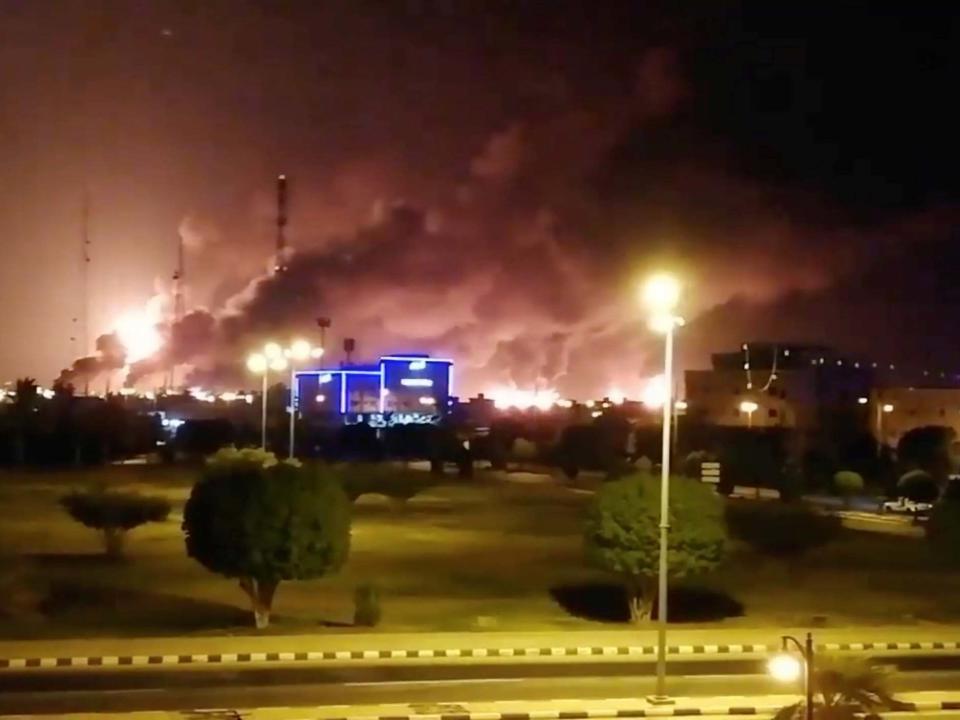The oil drone attack shows how Saudi Arabia and the UAE are fighting their own battles in Yemen

The marriage between Saudi Arabia and the UAE has long been on solid ground, but like any marriage, issues develop over time.
From day one in Yemen, the two sides have had completely different agendas.
Saudi Arabia’s intentions were, for the most part, to thwart Iran’s relentless attempts to plant the Houthis - a loyal, Hezbollah-like Shia militia – on the Saudis’ southern borders.
The UAE has sought to free south Yemen from both the Houthis and al-Qaeda and later use the region as a launching pad for its own strategic influence in the Horn of Africa.
The picture now – including the stalemate in the strategic port of Hodeida – tells us that the Saudi policy has failed, while the UAE’s self-interests have increased.
Instead of undermining Iran’s strategy to create another Lebanon in Yemen, we are now seeing three Lebanons – two controlled by Iran in Beirut and Sanaa, and a UAE-backed one in Aden. Saudi Arabia will also have to contend with unfriendly relations both near its northern borders with Iraq and the southern border with the Houthi-controlled north Yemen.
Yes, Yemen has become, in effect, two countries which are hostile to each other.
In the south of the country, there is a 90,000-strong militia, backed by the UAE. The Security Belt militia in the southern port city of Aden has taken over government positions – a government recognised by the UN and largely seen as a Saudi puppet – leaving Riyadh free of loyal Yemeni friends to rely on as a counterbalance with the Houthis’ well-entrenched power in the north.
The Saudis are under no illusion, however, that they will win the war. They, along with the Emiratis, have long concluded that the Yemen war is unwinnable, and have been looking for a way out.
But the Emiratis have acted faster and more decisive throughout. The Emirati troops’ withdrawal from Yemen may carry some meaningful de-escalation message to Iran. The Emiratis also avoided blaming Iran for standing behind the alleged harassment of ships in the Gulf waters. The other message is for President Donald Trump, who alienated UAE officials by showing little interest in maintaining their relationship.
The nearly magisterial welcome Qatar’s Emir Sheikh Tamim bin Hamad received in Washington DC in July reflected badly on US ties with Abu Dhabi. Some in the UAE (not surprisingly in Saudi Arabia too) grumbled about the president’s game to exploit the Gulf States’ feud and play his allies against one another.
Trump’s move rattled the Saudis and the Emiratis and prompted a defiant reaction, with the UAE unleashing the Yemeni southern separatists.
The UAE officials got it right. The US is not ready (and unwilling) to give its Gulf allies any security assurances. The UAE felt it has to make an immediate move in the south if they are to put an end to their costly and reckless intervention in Yemen.
However badly needed an exit from Yemen, the UAE’s withdrawal would leave the Saudis with no credible allies in Yemen, and scale back pressure on the Houthis, leaving them with more maneuvering space to launch yet more missiles and drones into Saudi Arabia.
Early on Saturday, drones attacked the world’s largest oil processing facility in Saudi Arabia and a major oilfield operated by Saudi Aramco, sparking a huge fire at a processor vital to global energy supplies.
Now, the ad-lib negotiations between the Americans and the Houthis are reflection of the Emirati success to convince the Saudis to find a face-saving way out of Yemen.
Although the Saudi-backed government authority is diminishing in Yemen, Saudi Arabia seems unable to hinder the Emirati control in the south. The Saudis have always seen the UAE presence in the south as part of the main operation against the Houthis, but the UAE still considers it an independent action.
http://players.brightcove.net/624246174001/default_default/index.html?videoId=5837728067001
Support free-thinking journalism and attend Independent events
The Southern Transitional Council’s new control over the port city of Aden showed that only the UAE has enough military power and local allied forces to pull the strings in the south. Relying on airpower for the past four years, Saudi Arabia seems completely out of touch and new to ground operations in the south, and in Yemen as a whole.
But Saudi Arabia is unlikely to stand by without a response to UAE control. Sources in the Gulf told me that a Saudi message has been sent to Qatar to reopen a bilateral dialogue to end the Gulf crisis. The Saudi move exasperated Abu Dhabi.
Although there are insecurities on both sides, the Saudi Arabia-UAE alliance remains solid on issues such as Iran, the Muslim Brotherhood and Libya. Despite the growing issues, and as long as Iran is wreaking havoc on their doorsteps, divorce is still unlikely anytime soon.

 Yahoo News
Yahoo News 